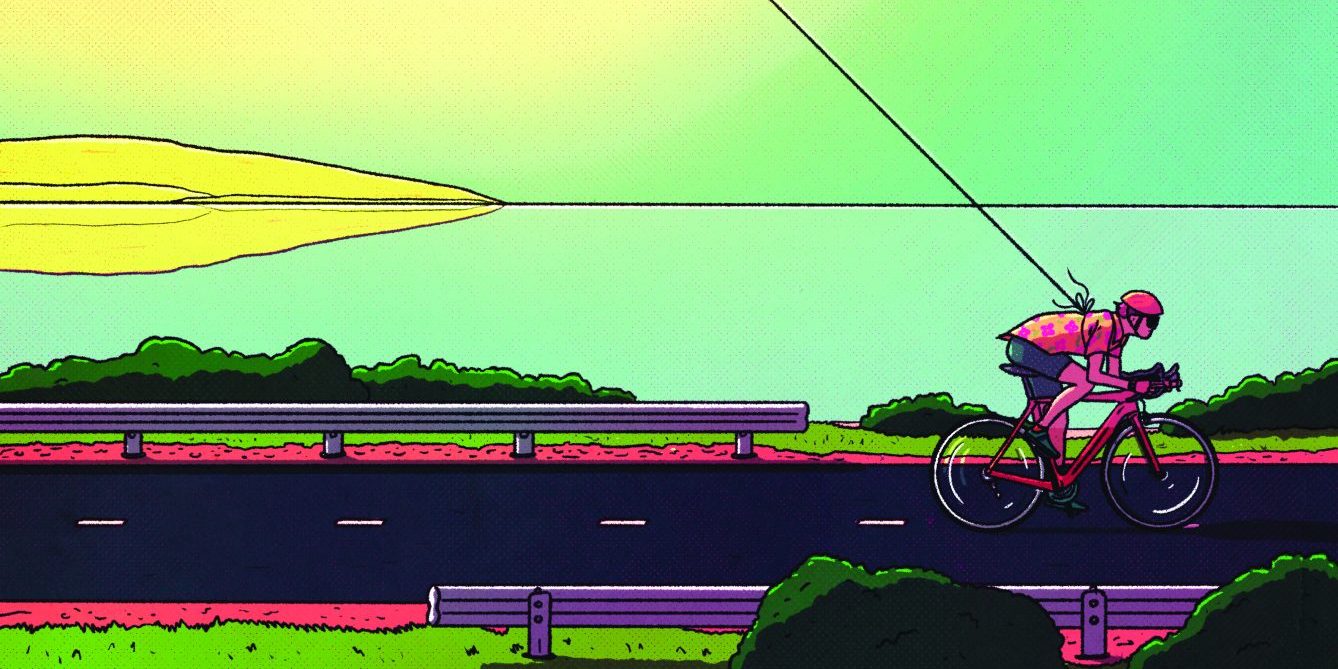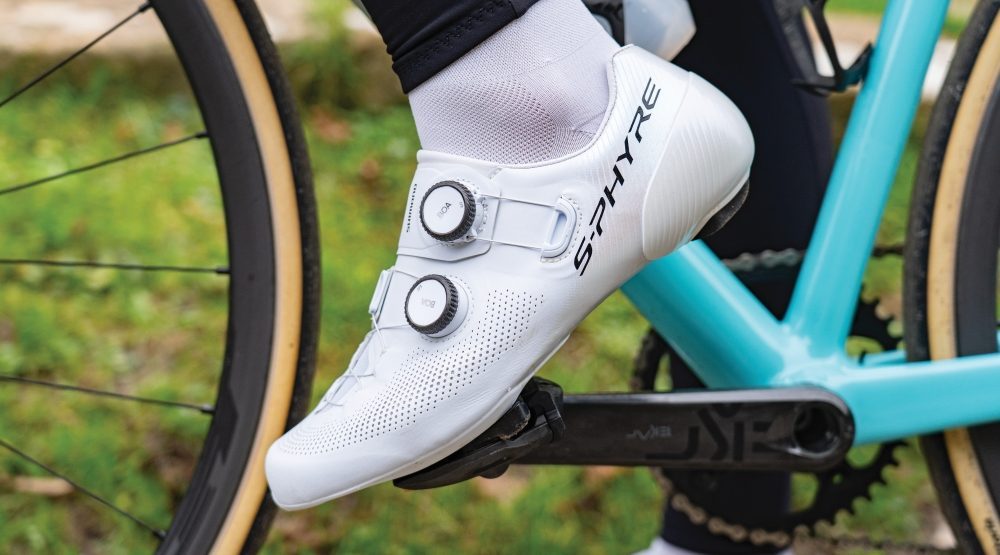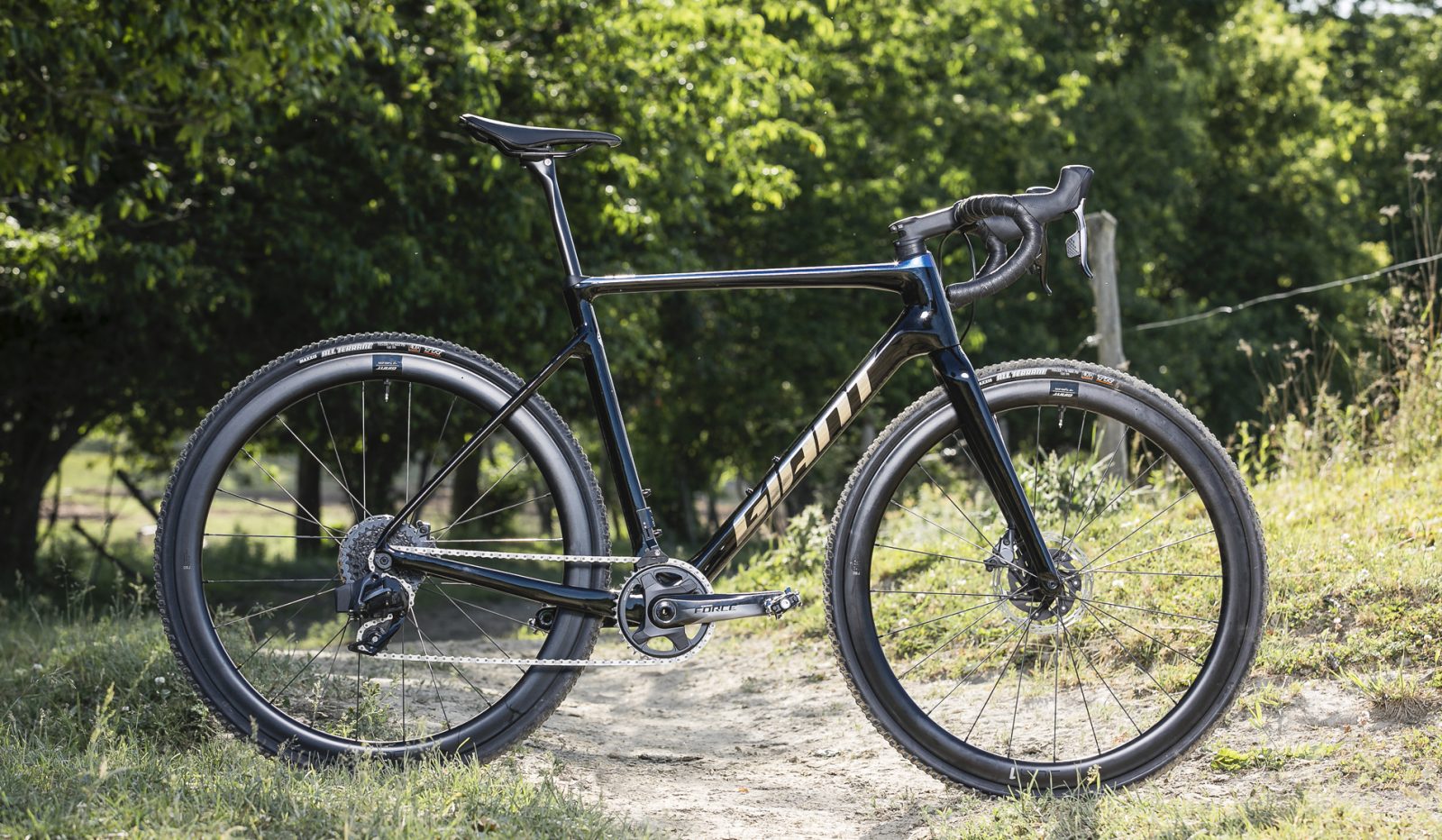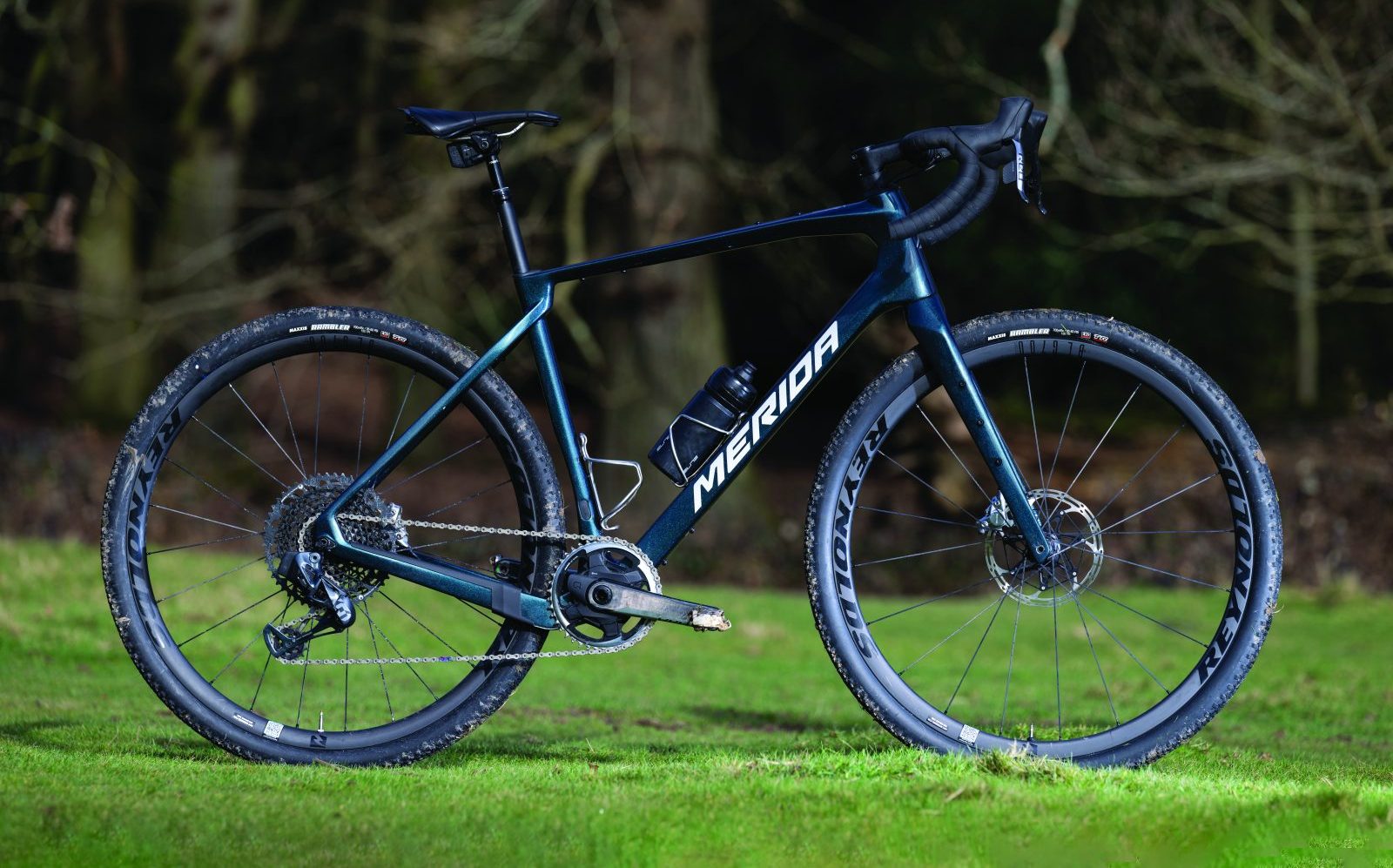Be at the top of your game by the time summer rolls around with this six-week training plan.
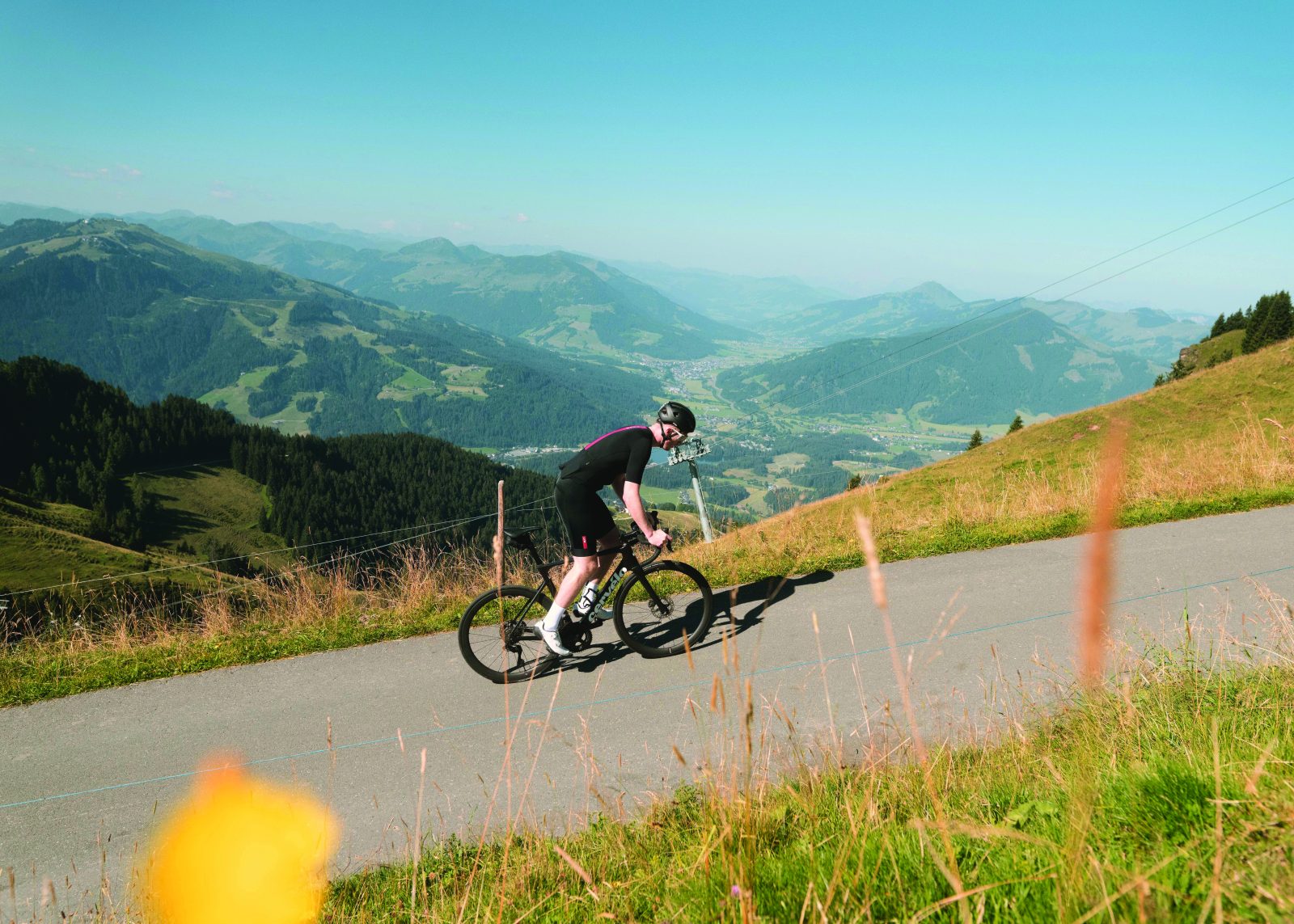
Words: Michael Donlevy Photography: Alice Gough Illustration: Laurent Hrybyk
Let’s assume you’ve been riding your bike (you have been riding your bike, right?) and have been racking up ‘base miles’ in the legs. You want to take the next step, of course, but any training plan is about balance.
‘Don’t put all of your effort into week one and then fade, in terms of both fatigue and interest levels,’ says cycling coach Richard Shepherd. ‘Pace your training and increase progressively by setting weekly hour goals to guide and motivate you. You also need to strike the right balance between volume and intensity. Both are key components of any training plan, but volume is the foundation from which you build.
‘Even if you have a deadline, your plan should prioritise aerobic endurance development,’ says Shepherd. ‘Then you add some more challenging efforts through the six weeks. At the start of the plan I’d recommend you spend 75% of your time doing endurance riding, 20% riding at a little below or at threshold pace and only 5% above threshold.
An endurance ride can last anything from one to four hours and should be at a moderate pace around 40-45bpm below your maximum heart rate or around 80% of your threshold pace, which is the maximum you can sustain for an hour.
Over the six weeks you increase the “below threshold” percentage gradually by replacing the endurance time. You can work harder and longer progressively using intervals, hill climbs and familiar sections of road where you can challenge your previous bests. And you can add intervals to endurance rides to make the sessions harder, build strength and increase road speed at the same time.’
Intervals – short bursts of intense effort at above threshold pace – are an essential training tool. They’re hard work but over quickly, so they are also time-efficient. The intensity raises your metabolic rate and heart rate much higher than steady-state training, so you burn more energy and get fitter, faster. Intervals also cause small tears in your muscles – this is good, because muscles then repair themselves stronger, but your body needs time to recover, so don’t do more than one set per week.
Shepherd has suggested three of his favourite sessions for building fitness, and two of them involve intervals. ‘The sessions need to be challenging but not so hard that you blow up after a minute or two,’ he says.
‘The first is three 10-minute intervals at 5-10% below your threshold pace, resting for five to seven minutes between intervals,’ he says. ‘This is tough but repeatable and it won’t leave you “empty” for the next session. You can progress over the six weeks to 3x 15 minutes and by reducing the resting time.
‘Secondly, ride for two minutes at 5-10% below threshold, then do two minutes at threshold pace and then one minute above threshold. Repeat this three times with enough rest to enable you to complete the next set.
‘Finally, a hill session: find a fast but steep climb that takes four to six minutes to complete. Ride near to threshold pace, drop the cadence a little and alternate between sitting and standing for the first 80%, then push to max effort to get to the top. You can turn this into an interval session by repeating it as you get fitter.
Stay regular
Consistency and efficiency are also important if you’re serious about maximising fitness gains, especially if you have a busy schedule with work and family commitments.
‘Don’t do one big session and then nothing for days,’ says Shepherd. ‘Try to complete a session every two days, or four times a week, even if one of those is a short turbo interval session or medium endurance effort.
‘Don’t stick to the same old familiar route,’ he adds. ‘Generally we ride where we feel most comfortable, but riding routes that include terrain you’re weaker on helps you improve.’
Six of the best
Sharpen your fitness in time for summer with this six-week guide that you can adapt to your very own goals.
Week 1
- In Week 1 take a functional threshold power or FTP test – the maximum pace you can ride for one hour – to gauge your fitness here.
- Rather than aim for a distance, tick off so many hours per week – that will depend on your goals, fitness and available time, but let’s aim for around eight hours across four rides in Week 1.
- Do one long ride (for example 3 to 3.5 hours) at up to 75% of FTP.
- Do one ride of one hour at up to 80% of FTP that includes some intervals or hill climbing at above FTP.
- The other ride should be an endurance session at up to 80% of FT
Week 2
- Week 1 included your FTP test, so increase volume in Week 2 to 8.5 hours.
- Do one long ride, increasing the time by 30 minutes from last week.
- Do one interval/hill climb session. Warm up for 10 minutes and add in some easy riding after the intervals to increase volume.
- Other rides should be endurance sessions. You can start to add in medium-intensity endurance training into these – do blocks of 20 minutes at 80-90% of your FTP
Week 3-5
- Increase volume in these weeks to 9-10 hours.
- Do one long ride, increasing volume by 30 minutes each week. Ride at threshold pace uphill and include some race pace intervals (2-3 minutes at just below threshold pace) on the flat to increase intensity.
- Do one interval/hill climb session. Increase the number or length of intervals and reduce the recovery time each week. Do intervals uphill to increase difficulty if required.
- Other rides should be endurance sessions. Continue to add in medium-intensity endurance training to these – try to add an extra five minutes per ride (or per week, depending on fitness).
- Add some 10-second sprints from a standing start during an endurance session to help build strength and power.
Week 6
- If this training plan takes you up to your holiday or event, you should begin to taper in the final week. Reduce volume to eight hours.
- Do one long ride of the same length as Week 5.
- Repeat the FTP test from Week 1. Bear in mind that unless you do these in a lab, results may be variable depending on weather and, quite simply, how you feel on the day. Repeat the test regularly through the summer and beyond to track changes over time.
- Other rides should be endurance sessions, but scale back volume and intensity to taper.
- If this is not the week before your target, repeat Week 5 but increase volume by adding one more endurance ride. Take the FTP test, then ride to maintain fitness and taper in the week before your holiday or sportive.
